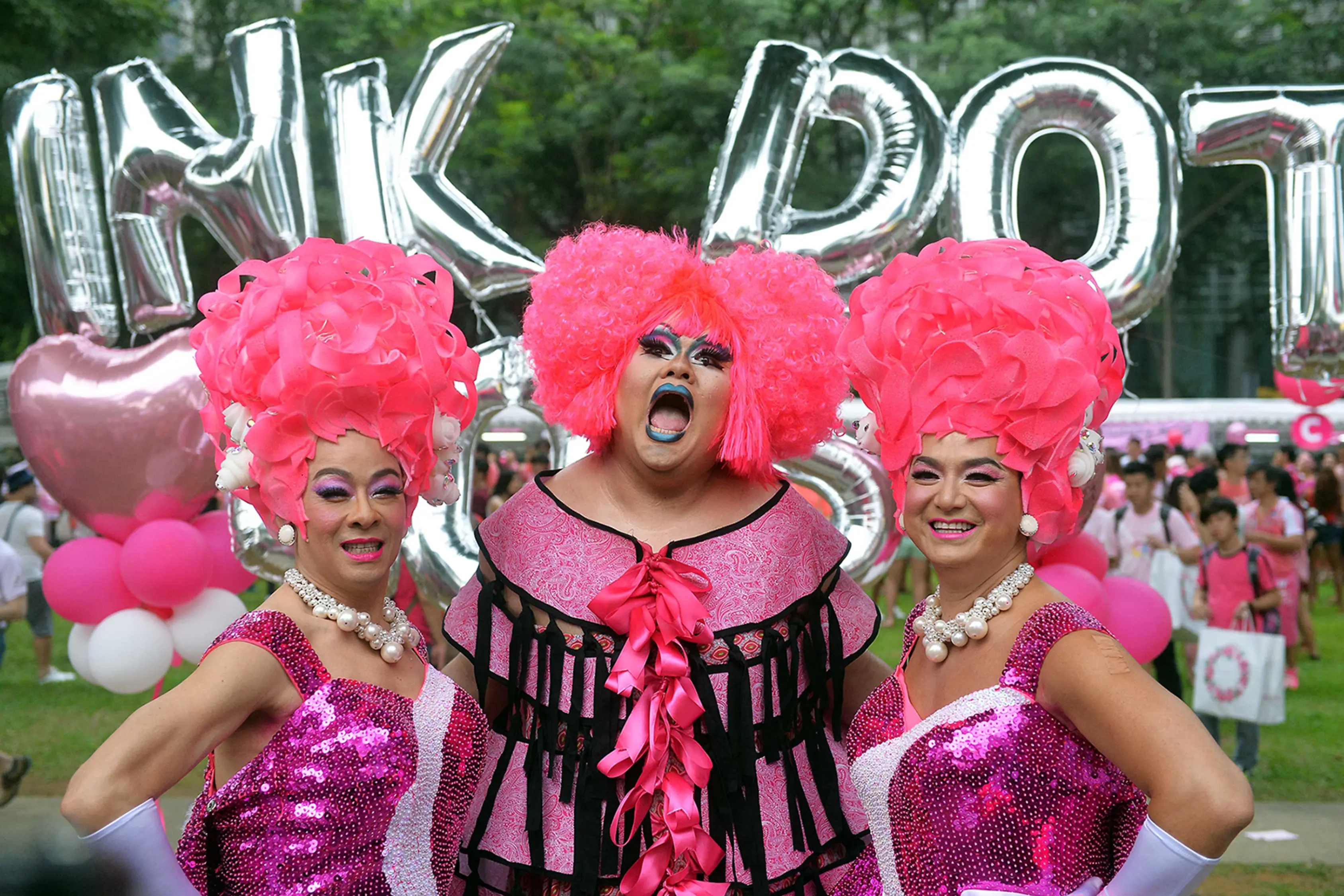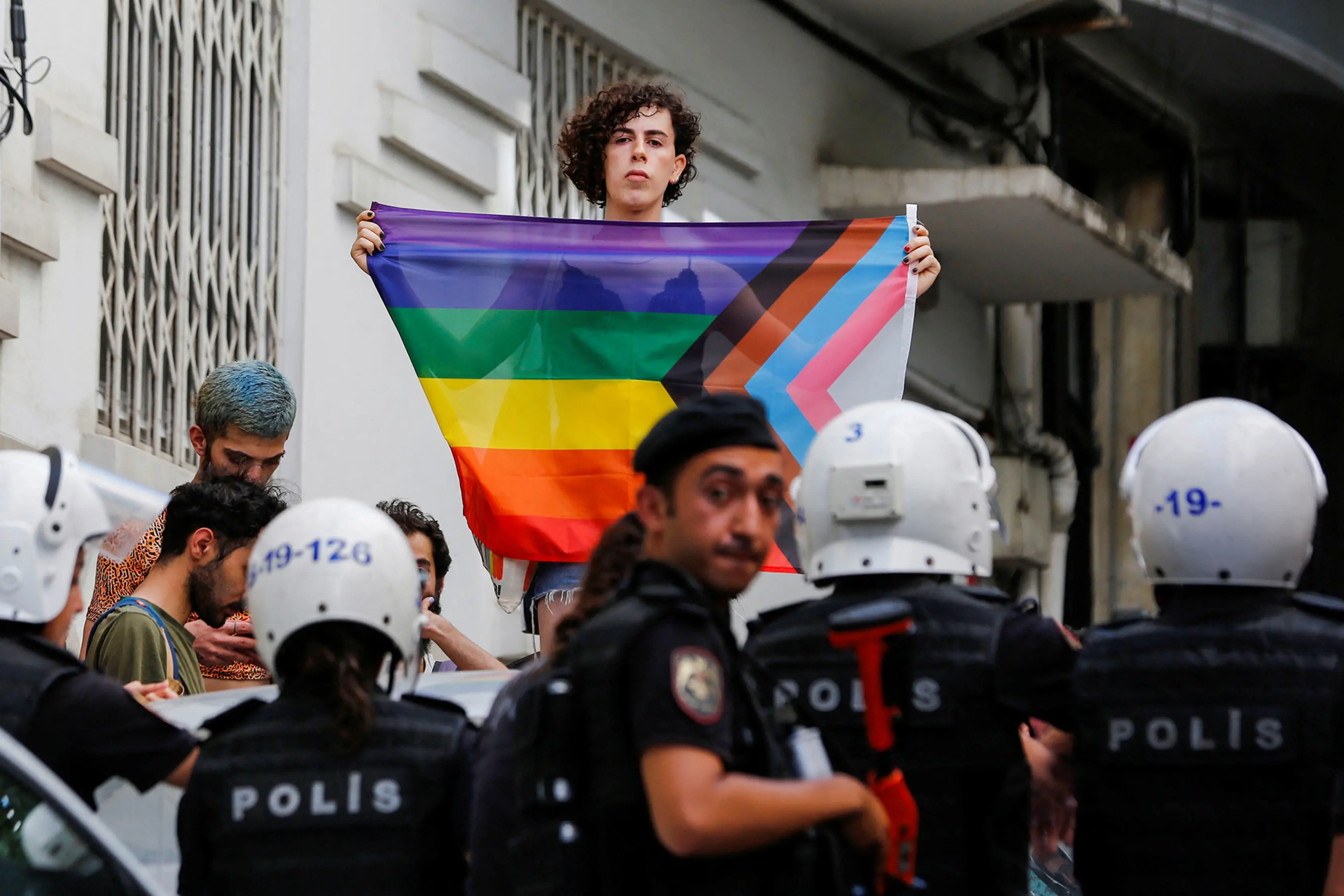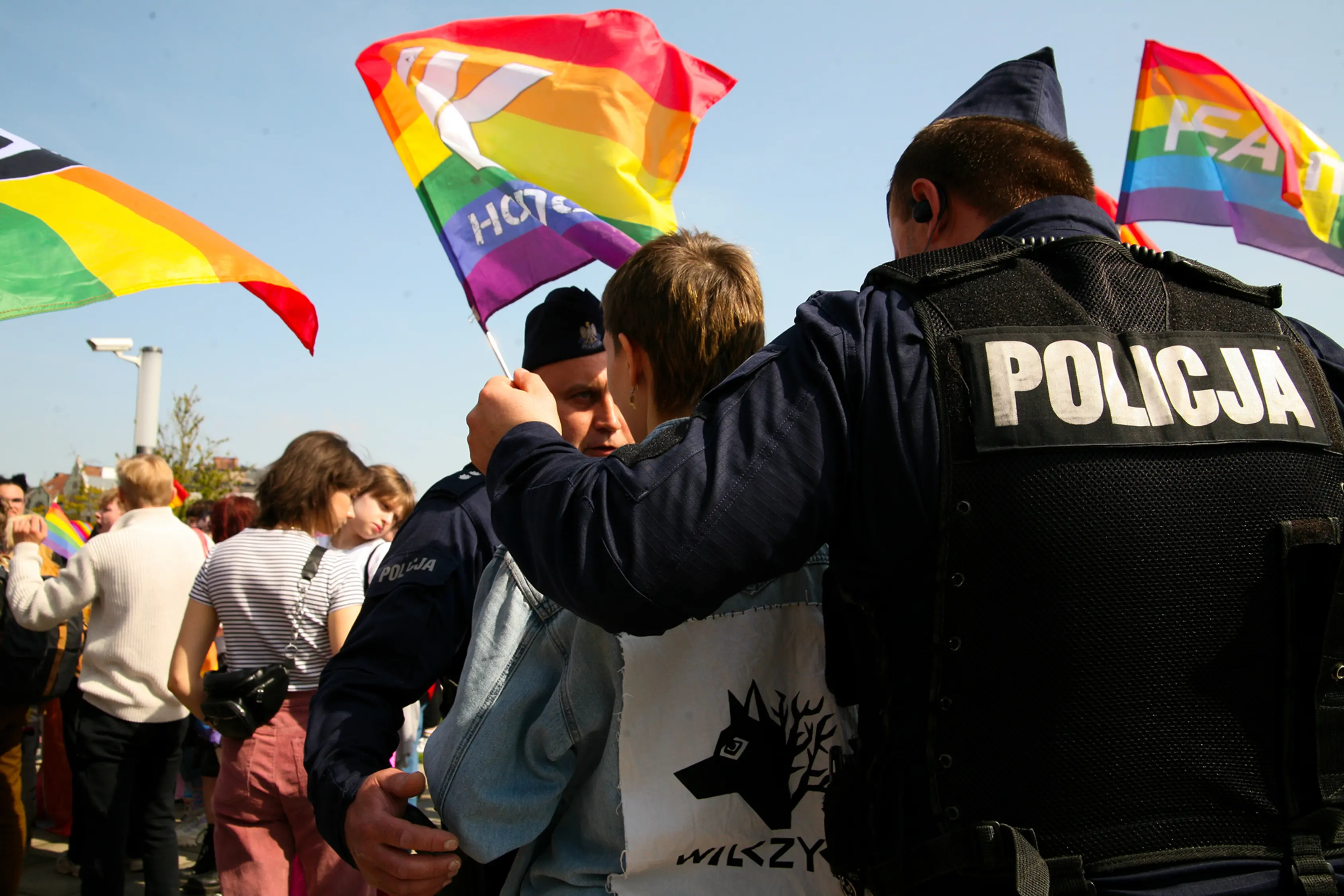How LGBTQ+ Pride Went Global
The annual celebration in support of equal rights for LGBTQ+ people has expanded to more than one hundred countries, but it continues to face intense opposition from some governments.
From the first gay liberation marches in the United States in 1970 to today’s array of diverse and unique celebrations around the world, Pride is now a powerful force for social change. But while millions of people across the globe gather every year to celebrate and fight for LGBTQ+ equality, the Pride movement continues to spark controversy and face resistance in some parts of the world.
Pride Is Born
In June 1970, hundreds of activists in Chicago, Los Angeles, New York City, and San Francisco, joined in a demonstration to commemorate the one-year anniversary of the Stonewall Riots, a violent uprising against the police’s harassment and abuse of the primarily gay and transgender bar patrons at New York’s Stonewall Inn. These first Pride events, particularly New York’s Christopher Street Gay Liberation Day march, marked the birth of LGBTQ+ Pride celebrations and a watershed moment in the LGBTQ+ rights movement.

The protests inspired activists across the United States to commemorate the Stonewall riots by hosting similar events in support of gay and lesbian visibility and equality in cities such as Boston and Washington, DC, before capturing international attention and sparking similar events in Toronto, London, and Berlin.

Many of these early celebrations protested laws that criminalized consensual same-sex activity and demanded full legal equality for LGBTQ+ people. During the 1970s and 1980s, the world witnessed the decriminalization of homosexuality and recognition of LGBTQ+ human rights across Europe, Latin America, and beyond.


Going Global
Today, Pride is celebrated on every continent, with millions of people in more than one hundred countries attending Pride festivities each year. Modern Pride events attract participants from all sectors of society, including world leaders, politicians, and celebrities, who come to express their support for LGBTQ+ people. These events take many forms, including official parades and carnivals, sporting events, musical performances, and film festivals, in addition to protests and demonstrations. They can also vary widely in size, ranging from dozens to millions of attendees at any given location.


Communities worldwide continue to recognize Pride in unique ways, infusing events with their cultural norms and adapting them to their local political environment. In Singapore, for example, Pride has taken the form of the “Pink Dot” movement since 2009. Singaporeans meet at Speakers’ Corner, a designated “free-speech zone” in Hong Lim Park, to hold up pink umbrellas, or wear pink, and form a pink dot large enough to be viewed from nearby high-rise buildings.

In Antarctica, scientists have celebrated Polar Pride at various research stations to highlight the achievements of LGBTQ+ individuals in science.

Some of the most highly attended Pride events include those in São Paulo, Brazil, attended by more than three million people annually, and in Madrid, which is regularly home to the largest Pride celebrations in Europe, with some two million visitors annually. Meanwhile, New York City continues to be a global hub for Pride—in 2019, the city hosted the largest LGBTQ+ march in history, with an estimated five million attendees.

The symbols of Pride have gained wide recognition, with the rainbow flag being the most famous. Designed by American artist Gilbert Baker, the original flag was first flown in June 1978. The colors are meant to represent the diversity of the LGBTQ+ community. The flag has been updated and adapted, most notably in 2018 by designer Daniel Quasar, whose “Progress Pride” flag more explicitly highlights the inclusion of trans people and people of color in the LGBTQ+ community.


Pushbacks and Challenges
Despite its global reach, Pride continues to face heavy, often violent opposition in many parts of the world. Even where its welcome, Pride has sometimes been drawn into intense political debates.
Many governments still crack down on Pride events or ban them outright. For example, in 2012, Russia’s courts issued a one-hundred-year ban on Pride events in Moscow, dealing a blow to LGBTQ+ activists who had been fighting to celebrate it for years. Russia has also labeled the “international LGBT movement” as extremist, adding LGBTQ+ groups to a list of terrorist organizations and effectively criminalizing LGBTQ+ activism across the country. And in Turkey, police have in recent years harassed, attacked, and detained activists and members of the LGBTQ+ community for celebrating Pride.

Pride has also sparked controversy in some countries that have celebrated the event for years, such as Israel. Some activists have criticized Tel Aviv Pride, the largest LGBTQ+ celebration in the Middle East, as an example of “pinkwashing,” meaning that the event promotes local acceptance of LGBTQ+ rights to detract attention from controversial matters, such as the Israeli-Palestinian conflict and human rights issues. Politicians elsewhere, including in the United States and Canada, have also been criticized for pinkwashing by attempting to highlight their countries’ acceptance of LGBTQ+ asylum seekers while supporting harsher immigration policies more broadly.
Other analysts point to the Middle East’s lack of major Pride celebrations as evidence of the Arab world’s hostility toward LGBTQ+ issues, though smaller Pride events have been hosted throughout the region, such as those in Lebanon.

There have also been high-profile controversies surrounding Pride symbols in many parts of the world. For instance, the government of Qatar, host of the 2022 FIFA World Cup, received significant international criticism for imposing tight restrictions on the display of LGBTQ+ symbols, such as rainbow flags, at the sporting event. Qatar also outlaws same-sex sexual activity. More recently, in March 2024, the U.S. government enacted spending legislation that effectively banned the flying of Pride flags at U.S. embassies around the world, a prohibition opposed by President Joe Biden.

Power, Perseverance, and Hope
Ahead of Pride in 2024, more ominous signals emerged. U.S. Secretary of State Antony Blinken issued a worldwide notice in May, warning U.S. citizens abroad to exercise increased vigilance when visiting Pride events, citing the increased potential for terrorist attacks, demonstrations, or violence. LGBTQ+ events during Pride month have become targets for violence in recent years, such as the mass shootings at Florida's Pulse nightclub, in 2016, and Norway's Oslo Pride, in 2022.
But despite this adversity, supporters of Pride events around the world say that the festivities will continue to serve the LGBTQ+ community and its allies as epicenters of political power and protest, as well as beacons of hope.

For instance, South Africa remains a regional leader in advocating for Pride events despite the range of anti-homosexuality bills being introduced across Africa, such as those in Ghana and Uganda. Pride celebrations in Johannesburg and Cape Town continue to serve as platforms for LGBTQ+ Africans, including those fleeing discrimination and persecution by hostile governments in the region, to protest for LGBTQ+ equality.


Meanwhile, Taiwan remains home to the largest Pride events in East Asia. The island nation is widely viewed as a leader for democracy and LGBTQ+ rights in the region. Its government was the first in Asia to recognize same-sex marriages and enact policies aimed at protecting LGBTQ+ people. Taiwan has also appointed openly gay, lesbian, and trans politicians to high-level offices.

And in Ukraine, organizers remain determined to hold Pride events despite Russia’s devastating 2022 invasion and ongoing bombardment. The Ukrainian city of Kharkiv, which hosted its first Pride event in 2019, has moved its celebration underground, into the metro system, to keep the event alive. Similar Pride events have been proposed for this year in Kyiv, the capital, despite security concerns.

Recommended Resources
The Library of Congress depicts the history of LGBTQ+ Pride in the United States using film and photos from its collection.
The U.S. Department of State releases annual Country Reports on Human Rights Practices that include by-country accounts of the acts of violence, criminalization, and other abuses faced by LGBTQ+ people.
Outright International tracks the celebration of Pride and other LGBTQ+ visibility events around the globe through interactive maps and country-specific overviews.
This report by the United Nations’ independent expert on protecting LGBTQ+ rights, examines how LGBTQ+ communities have limited access to freedoms of expression, peaceful assembly, and association and argues that, as a result, LGBTQ+ people are less able to advocate for themselves in increasingly inhospitable environments.
Human Dignity Trust examines the history of the criminalization of LGBTQ+ people, from the first recorded references in English law in 1290 to today.
 Online Store
Online Store